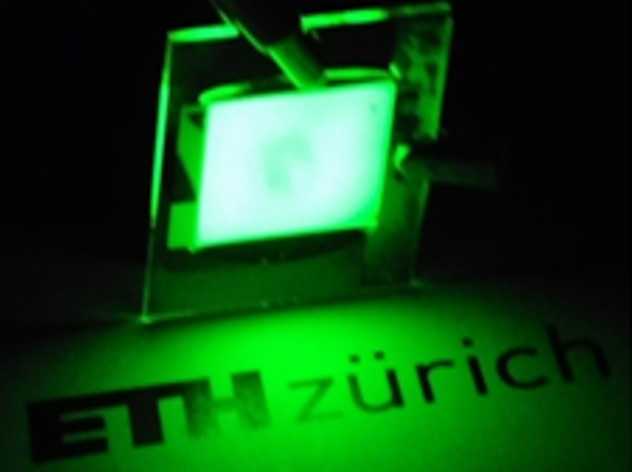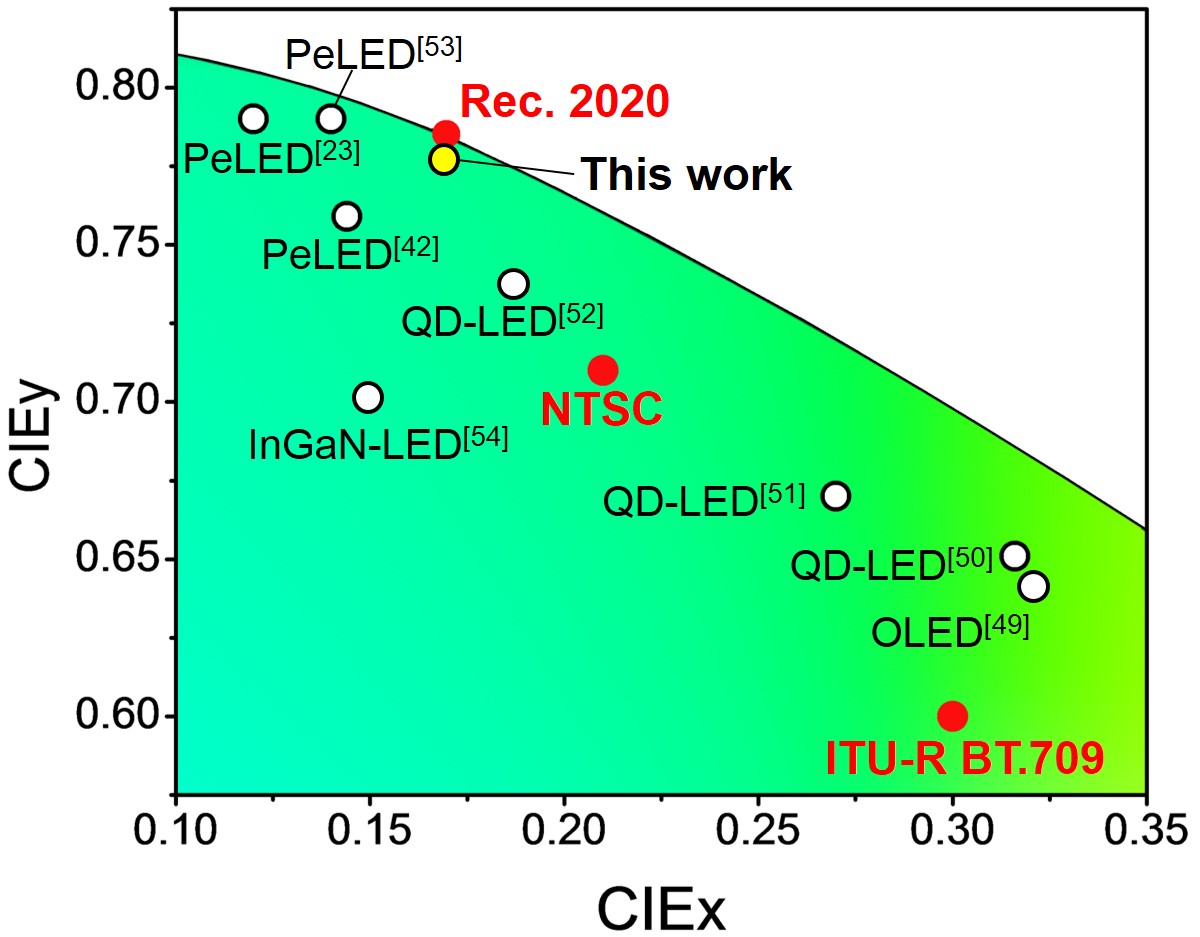[Nano Lett.] Ultrapure Green Light Emitting Diodes Using Two-Dimensional Formamidinium Perovskites: Achieving Rec. 2020 Color Coordinates
We demonstrated the "greenest" LED ever!!
Pure green light emitting diodes (LEDs) are essential to realize an ultra-wide color gamut in the next-generation displays, as is defined by the Rec. 2020 standard. However, because the human eye is more sensitive to the green spectral region, it is not yet possible to achieve an ultra-pure green electroluminescence (EL) with sufficiently narrow bandwidth that covers >95% of the Rec. 2020 standard in the CIE 1931 color space. Here, we demonstrate efficient, ultra-pure green EL based on the colloidal two-dimensional (2D) formamidinium lead bromide (FAPbBr3) hybrid perovskites. Through the dielectric-quantum-well (DQW) engineering, the quantum-confined 2D FAPbBr3 perovskites exhibit a high exciton binding energy of 162 meV, resulting in a high photoluminescence quantum yield (PLQY) of ~92% in the spin-coated films. Our optimized LED devices show a maximum current efficiency (ηCE) of 13.02 cd A-1 and the CIE 1931 color coordinates of (0.168, 0.773). The color gamut covers 97% and 99% of the Rec. 2020 standard in the CIE 1931 and the CIE 1976 color space, respectively, representing the “greenest” LEDs ever reported. Moreover, the device shows only a ~ 10% roll-off in ηCE (11.3 cd A-1) at 1000 cd m-2. We further demonstrate large-area (3 cm2) and ultra-flexible (bending radius of 2 mm) LEDs based on the 2D perovskites.
external pageNano Letters DOI: 10.1021/acs.nanolett.7b01544call_made


